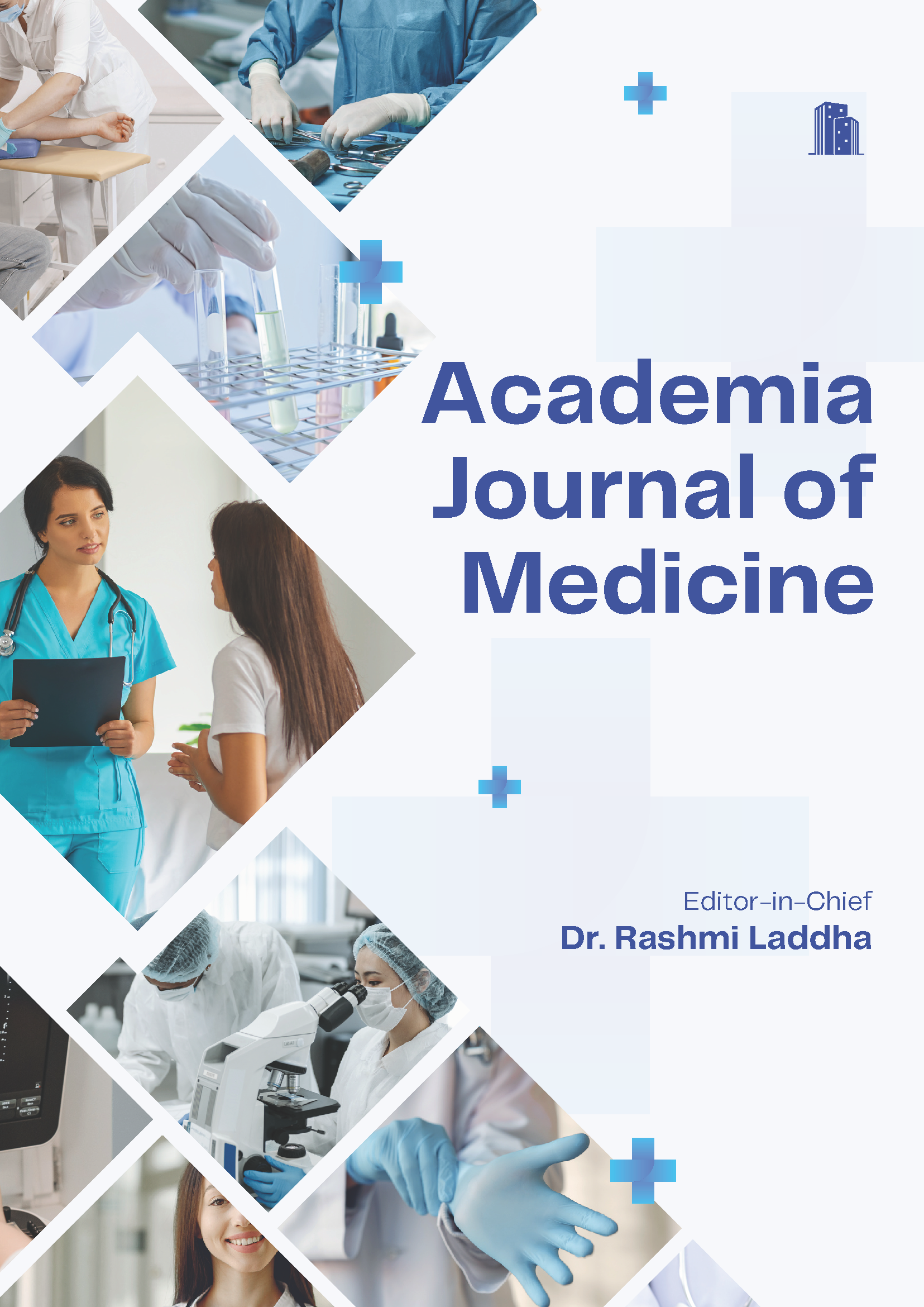Assessment of Cases of Stroke in Emergency Department
DOI:
https://doi.org/10.48165/hv6xn793Keywords:
Emergency department, StrokeAbstract
Background: One of the leading causes of death and adult disability among general population is stroke. The efficacy of acute stroke treatment is very time dependant. This includes both pharmacological and mechanical thrombolysis. Hence; we planned the present study to assess the cases of stroke which reported to the emergency department of the institution. Subjects and Methods: The present study included assessment of cases of stroke which reported to the emergency department of the medical institution. A total of 50 cases of stroke were included in the present study. Complete demographic details of all the patients were obtained. All the results were compiled in Microsoft excel sheet and were analysed by SPSS software. Results: Dyslipidaemia was found to be present in 80 percent of the patients. Disturbances in speck and visual disturbances were found to be present in 78 percent and 80 percent of the patients. Motor and sensory symptoms were found to be present in 72 percent and 64 percent of the patients. Headache and dizziness was present in 84 percent and 78 percent of the patients. Conclusion: Stoke represent a significant health problem with high mortality and morbidity. It is more common in elderly subjects with positive history of smoking and dyslipidaemia.
References
1. Mosley I, Morphet J, Innes K, Braitberg G. Triage assessments and the activation of rapid care protocols for acute stroke patients. Aust Emerg Nurs J. 2013;16:4–9.
2. Maestre-Moreno JF, Arnaiz-Urrutia C, del Saz-Saucedo P, Fernandez Perez MD, Vatz KA, Feria-Vilar I, Montiel-Navarro L, Pineda Martinez A, Creus-Fernandez C, Ortega-Moreno A. Impact of warning against procrastination of thrombolysis in ischemic stroke. Rev Neur. 2007;44:643–6.
3. Meretoja A, Strbian D, Mustanoja S, et al. Re ducing in-hospital delay to 20 minutes in stroke thrombolysis. Neurology 2012; 79:306–313. 4. Lees KR, Bluhmki E, Kummer R, et al. Time to treatment with intravenous alteplase and outcome in stroke: an updated pooled analysis of ECASS, ATLANTIS, NINDS, and EPITHET trials. Lancet 2010; 375:1695–1703.
5. Marler JR, Tilley BC, Lu M, et al. Early stroke treatment associated with better outcome: the NINDS rt-PA stroke study. Neurology. 2000;55:1649–55.
6. Nilasena DS, Kreskowik TF, Wiblin RT, Piskac AF, Kresowik RA, Brenton MA, Wilwert JM, Hendel ME. Assessing patterns of tPA use in acute stroke. Stroke. 2002;33:354.
7. Fernandez R, Compton S, Jones KA, et al. The presence of a family witness impacts physician performance during simulated medical codes. Crit Care Med 2009; 37:1956–1960.
8. Clark W, Lutsep H, Barnwell S, et al. The penumbra pivotal stroke trial: safety and effectiveness of a new generation of mechanical devices for clot removal in intracranial large vessel occlusive disease. Stroke. 2009;40(8):2761-2768.
9. Schaefer PW, Barak ER, Kamalian S, et al. Quantitative assessment of core/penumbra mismatch in acute stroke: CT and MR perfusion imaging are strongly correlated when sufficient brain volume is imaged. Stroke. 2008;39(11):2986-2992.
10. Reed SD, Cramer SC, Blough DK, Meyer K, Jarvik JG. Treatment with tissue plasminogen activator and inpatient mortality rates for patients with ischemic stroke treated in community hospitals. Stroke. 2001;32:1932–1940.
11. Hacke W, Kaste M, Bluhmki E, et al. Thrombolysis with alteplase 3 to 4.5 hours after acute ischemic stroke. N Engl J Med. 2008;359(13):1317-1329.Mosley I, Nicol M, Donnan G, Patrick I, Kerr Dewey H. The impact of ambulance practice on acute stroke care. Stroke. 2007;38:2765–70.
12. Drury P, Levi C, D’Este C, McElduff P, McInnes E, Hardy J, Dale S, Cheung NW, Grimshaw JM, Quinn C. Quality in Acute Stroke Care (QASC): process evaluation of an intervention to improve the management of fever, hyperglycemia, and swallowing dysfunction following acute stroke. Int J Stroke. 2014;9:766–776.
13. Latchaw RE, Alberts MJ, Lev MH, et al. Recommendations for imaging of acute ischemic stroke: a scientific statement from the American Heart Association. Stroke. 2009;40(11): 3646-3678.
14. Ashkenazi L, Toledano R, Novack V, EIluz E, Abu-Salamae I, Ifergane G. Emergency department companions of stroke patients: implications on quality of care. Medicine (Baltimore). 2015 Mar;94(9):e520. doi: 10.1097/MD.0000000000000520.
15. Madsen TE1, Choo EK1, Seigel TA2, Palms D3, Silver B4. Lack of gender disparities in emergency department triage of acute stroke patients. West J Emerg Med. 2015 Jan;16(1):203-9. doi: 10.5811/westjem.2014.11.23063. Epub 2014 Dec 1.

